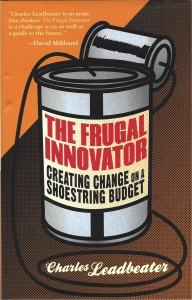The one sentence summary
Frugal innovation is lean, simple, clean and social.
WHAT THE BOOK SAYS 
- Large companies in developed economies are now learning that the most ingenious innovation is coming from entrepreneurs in the developing world, who are coming up with radical solutions to pressing challenges.
- Frugal innovators follow four design principles: lean, simple, clean and social.
- In other words, strip out every form of waste and cost, do the simplest possible thing, and find a way to capture the imagination of those who can benefit.
- These ideas are being devised in areas such as clean water, energy and healthcare, because the constraints they work with give them no option but to think radically.
- Too much innovation in a modern economy provides us with more, different products, rather than better solutions.
- Frugal innovation was first recognised in India as jugaad, a Hindi word meaning an improvised and resourceful solution that makes the most of what is available; patching things together using simple means.
- In Brazil it is gambiarra, in Africa jua kali, and in China zizhu chuagxin.
- Frugal innovators get real; design, but don’t overdesign; stay close to the customer need; borrow unashamedly; make allies and share value; stay flexible; creatively muddle through; thrive on constraints; work in the margins; and use crises to be creative.
WHAT’S GOOD ABOUT IT
- Ask for what appears to be impossible, and you never know. Frugal innovators start by asking questions that risk making them sound stupid.
- Waste is fuel. Blend, do not invent. Think like a movement.
- First there was a rush to acquire stuff, then a squeeze as we moved from need to want, then the crunch (various crashes and recessions), and now a swell of frugal innovation. This is pretty much the sequence described in The Great Stagnation and Stuffocation.
WHAT YOU HAVE TO WATCH
- Lean and simple effectively seem to be the same thing.
- It’s the old conundrum: having no budget drives inventiveness, and yet innovators in the developed world usually have the luxury of one, so are they really as ingenious?
- This could effectively be two books. Part one explains the economic path the world took to be in such trouble, and part two explains the frugal innovator approach. Either part could just as easily be read separately.
